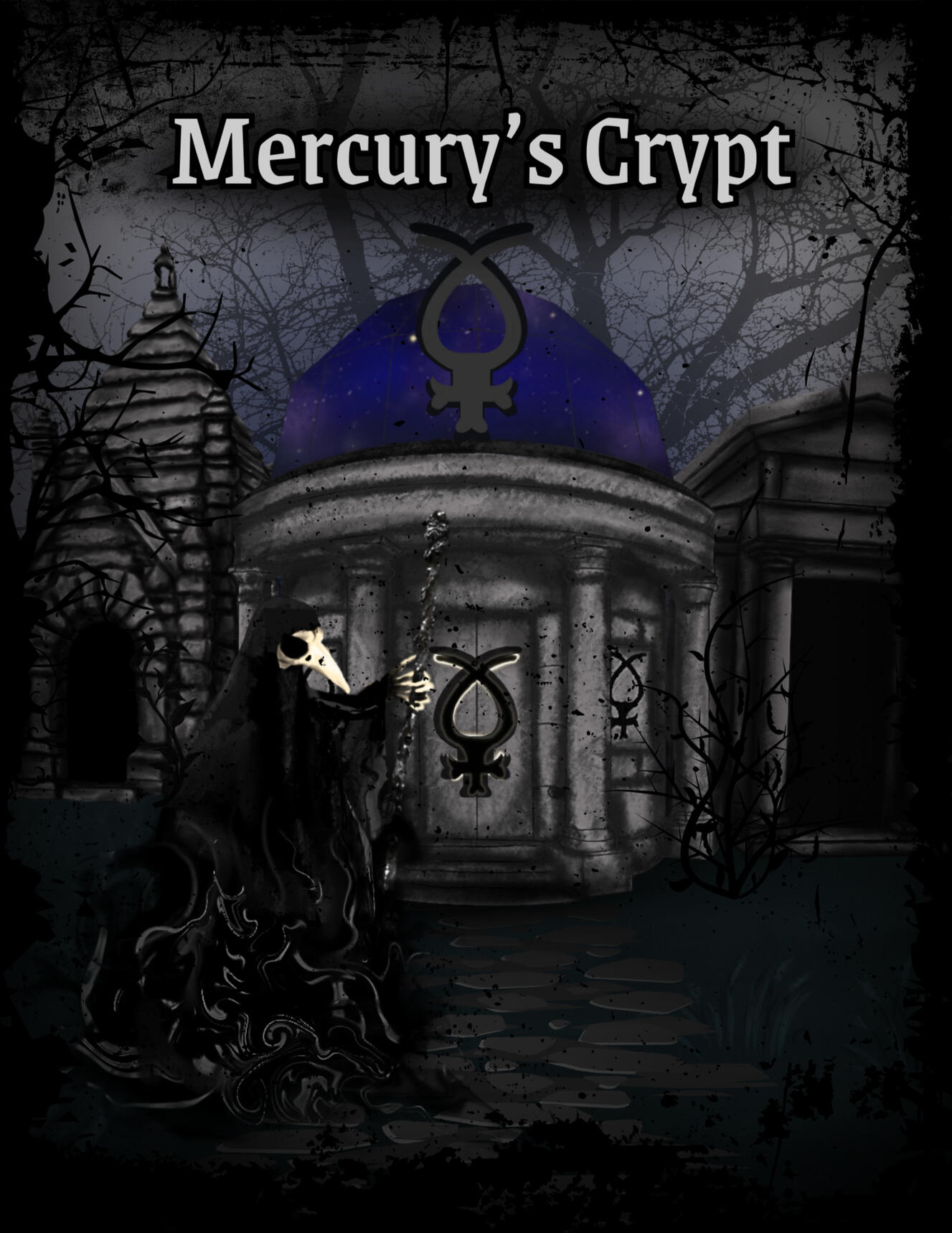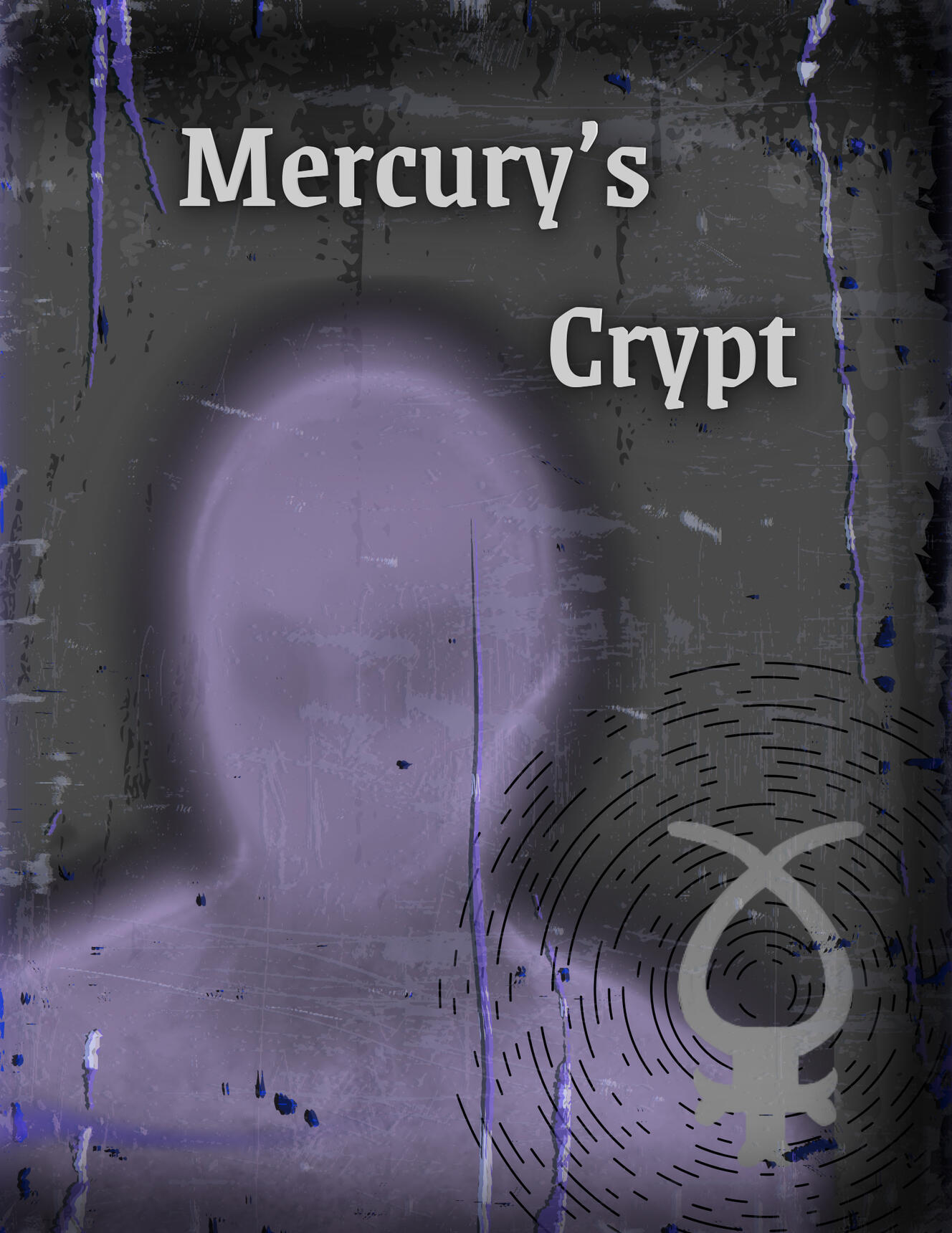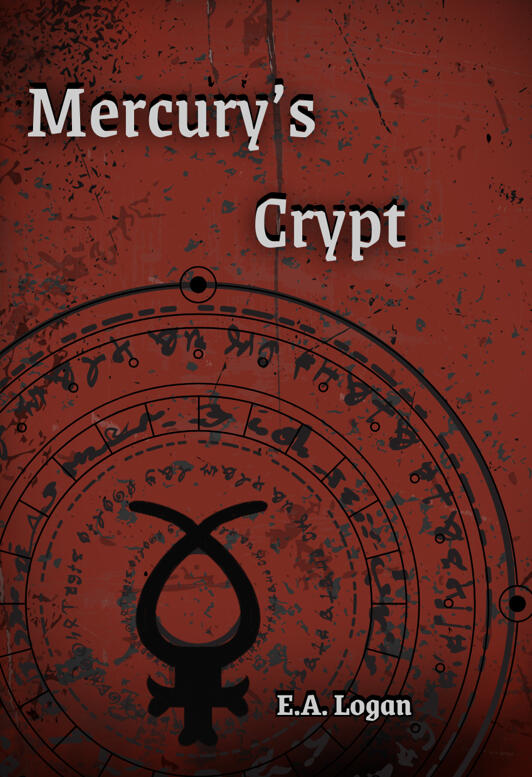OFFICIAL WEBSITE OF E.A. LOGAN
E.A. Logan published the first of the Odeum series in May of 2020 while also working on finishing the second book, The Keeper. She began working on the series in 2007 and after a decade of developing the story and characters, she brought it to a friend who encouraged her to finish the first book.
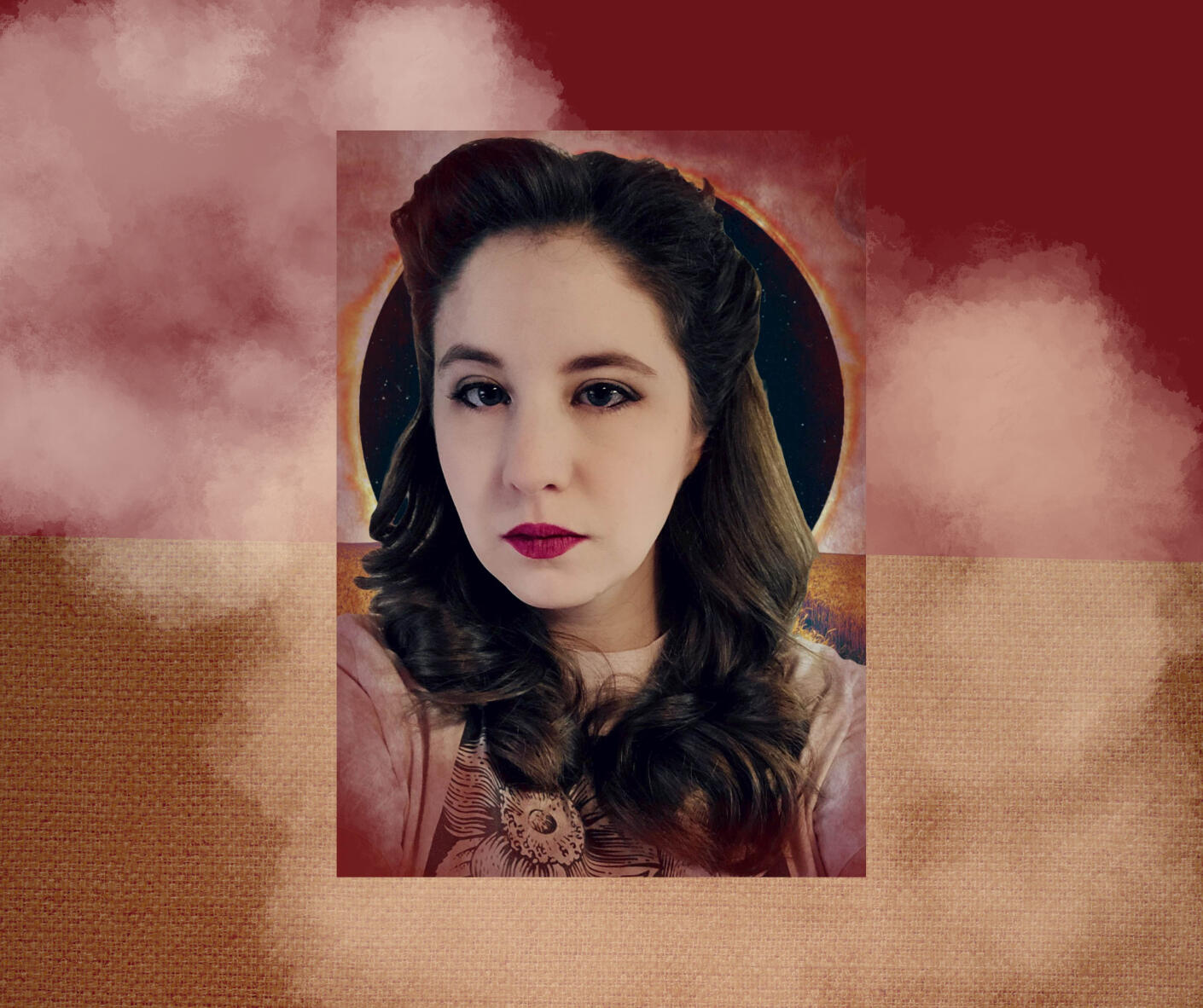
About
E.A. Logan works on a multitudes of creative projects, including but not limited to the Odeum series. Other creations include digital art, scriptwriting, and music. Check out the links below to explore more of her work.

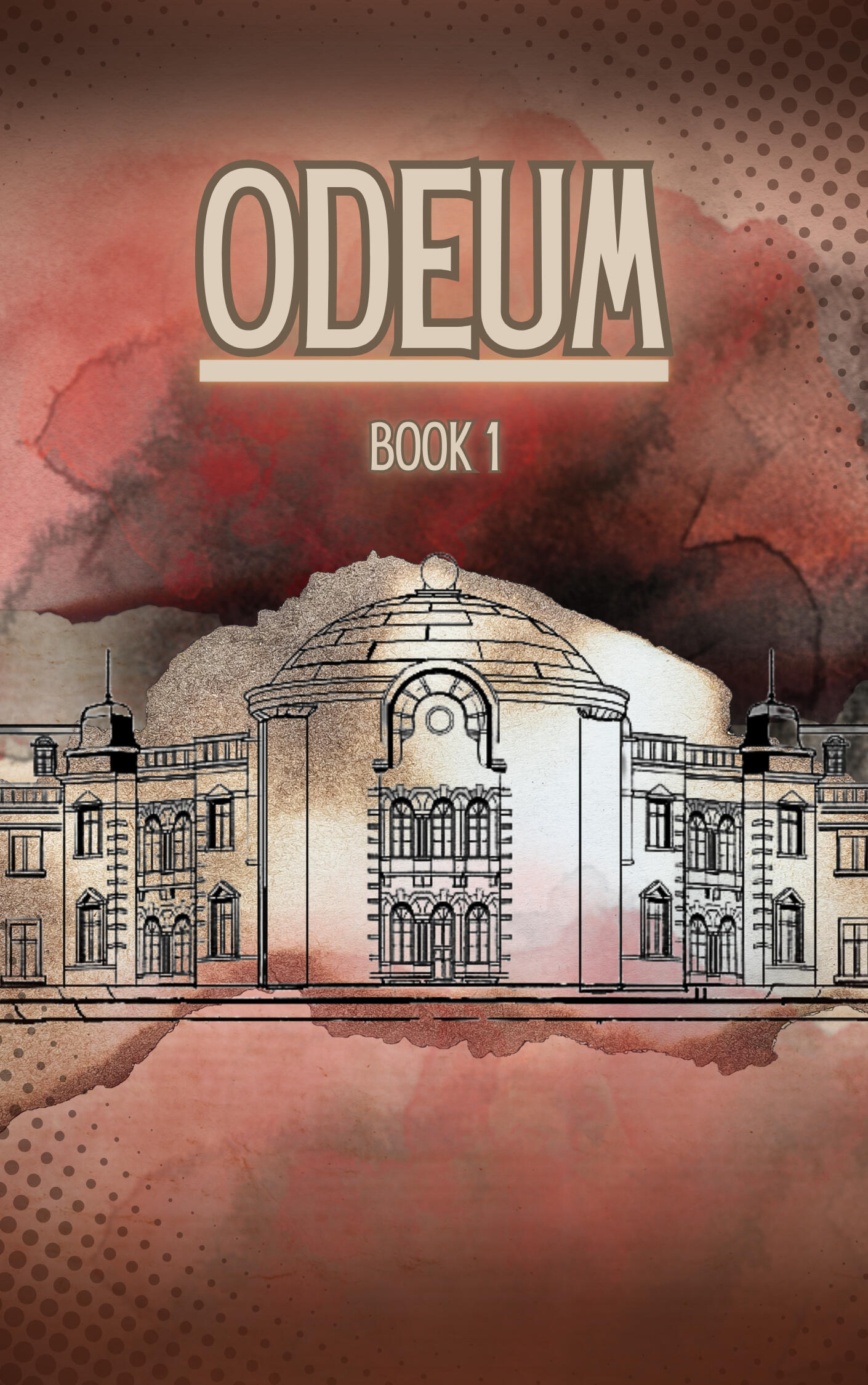
ODEUM
Kaylie Lynn leaves home after high school to pursue her dream of acting in theater. She is chosen by the theater owner, Jauq Maures, to join a prestigious program for up-and-coming actors in Park Ridge, Indiana. While there, Kaylie falls for a handsome fellow actor named Jas, only to discover he is a vampire living with others of his kind beneath the theater. When a series of events forces the vampires to vacate the theater, Kaylie finds herself entangled with a shadowy vampire government known as The Council. Accused of associating with vampires, Kaylie must navigate the dangerous world of The Council while trying to rebuild her life from the ashes. Can she escape their clutches and reclaim her future?

THE KEEPER
The Keeper. The second book of the Odeum series brings you the flip-side of Kaylie's story. The dark machinations of The Council and the polarizing actions of one of it's Magistrates throws those involved into a series of catastrophes.Anna wakes up not knowing who she is or what events have transpired to leave her, sitting in the dark, with a man she doesn't recognize. Her memories begin to unfurl, and she discovers that she has become part of a new world. She questions herself in an effort to learn about who she is and what her purpose is in this new existence. In her journey she is guided by Gerard, whom she calls The Keeper. He struggles to balance his focus on a bizarre investigation while trying to help Anna adjust to her new life. Gerard and Anna must navigate through the toxic political mechanisms of The Council and investigate a long list of treachery, lies, and deceit in order to solve the Odeum case.
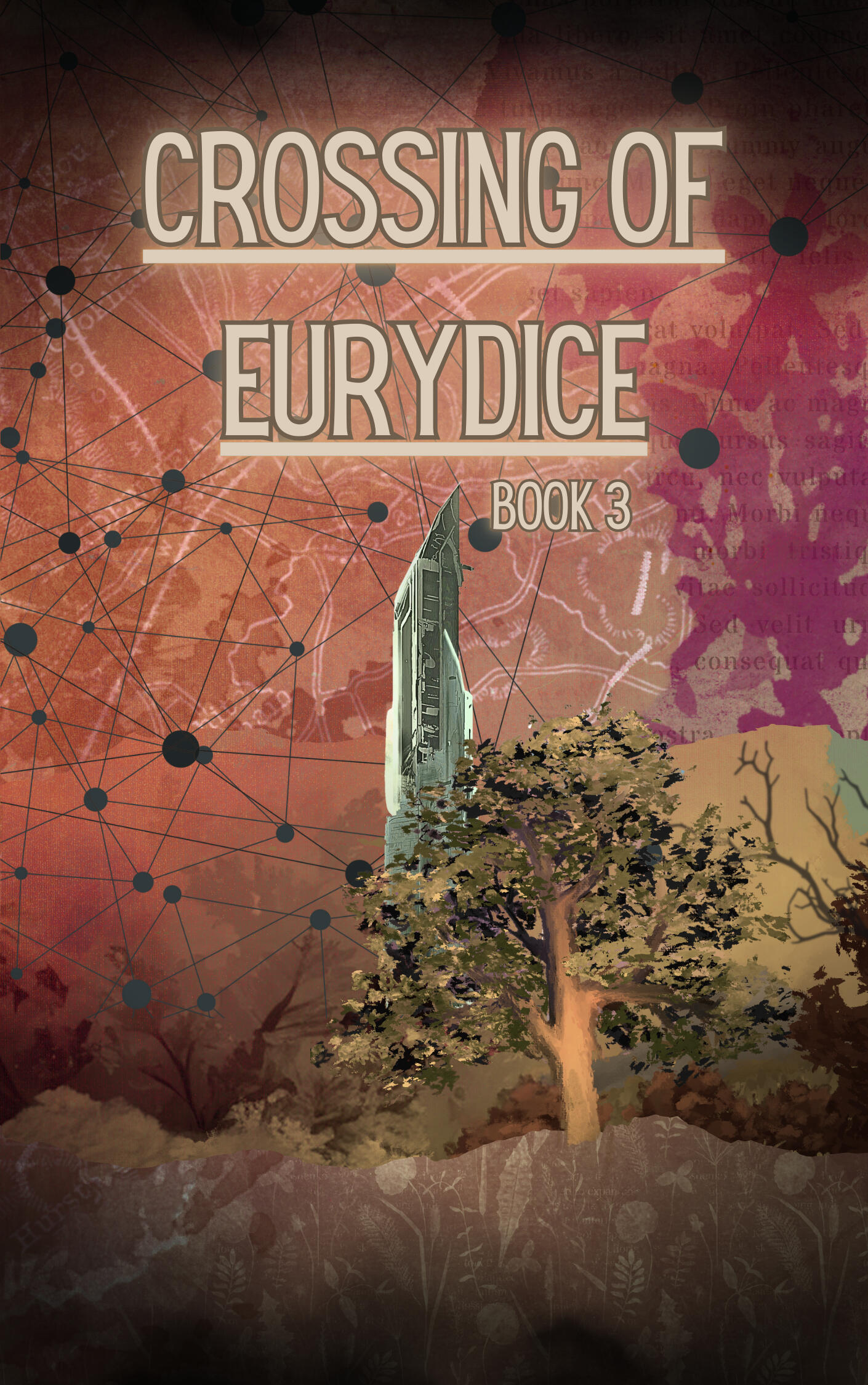
Crossing of Eurydice
Crossing of Eurydice is the third book of the Odeum series that ties additional events into books 1 and 2.
Roslyn is a hot-headed business-analyst, recently suspended from work. Mitchell, her husband, suggests that he brings home pizza for a comforting dinner. When he leaves to retrieve it, he never returns home. The police arrive at Roslyn’s door and inform her that Mitchell has died in a car accident, but something is off about the officer and his story. Roslyn embarks on an investigation to discover what happened to her husband...
Mercury's Crypt
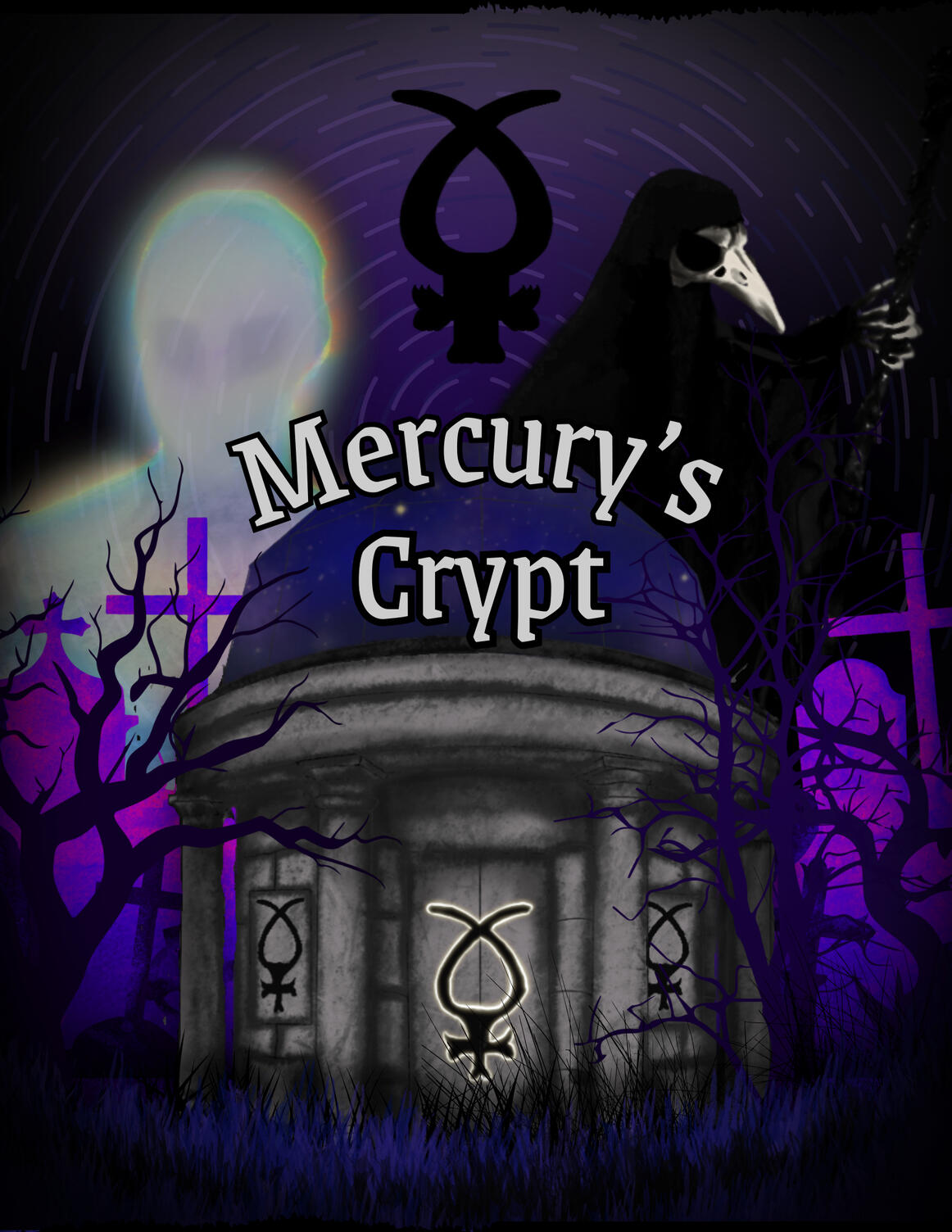
Mercury's Crypt is a novella unrelated to the Odeum Series.
A hero's journey about a young necromancer named Mika. She is chosen to become the next Channeler in her lineage, to take up a ritual that opens the veil between the world of the living and the dead. When Mika performs the ritual, the spirits of the dead begin to possess those from her village. Mika must discover the cause of the possessions. She will have to use the powers of her birthright and journey through the Land of the Dead to save her village.
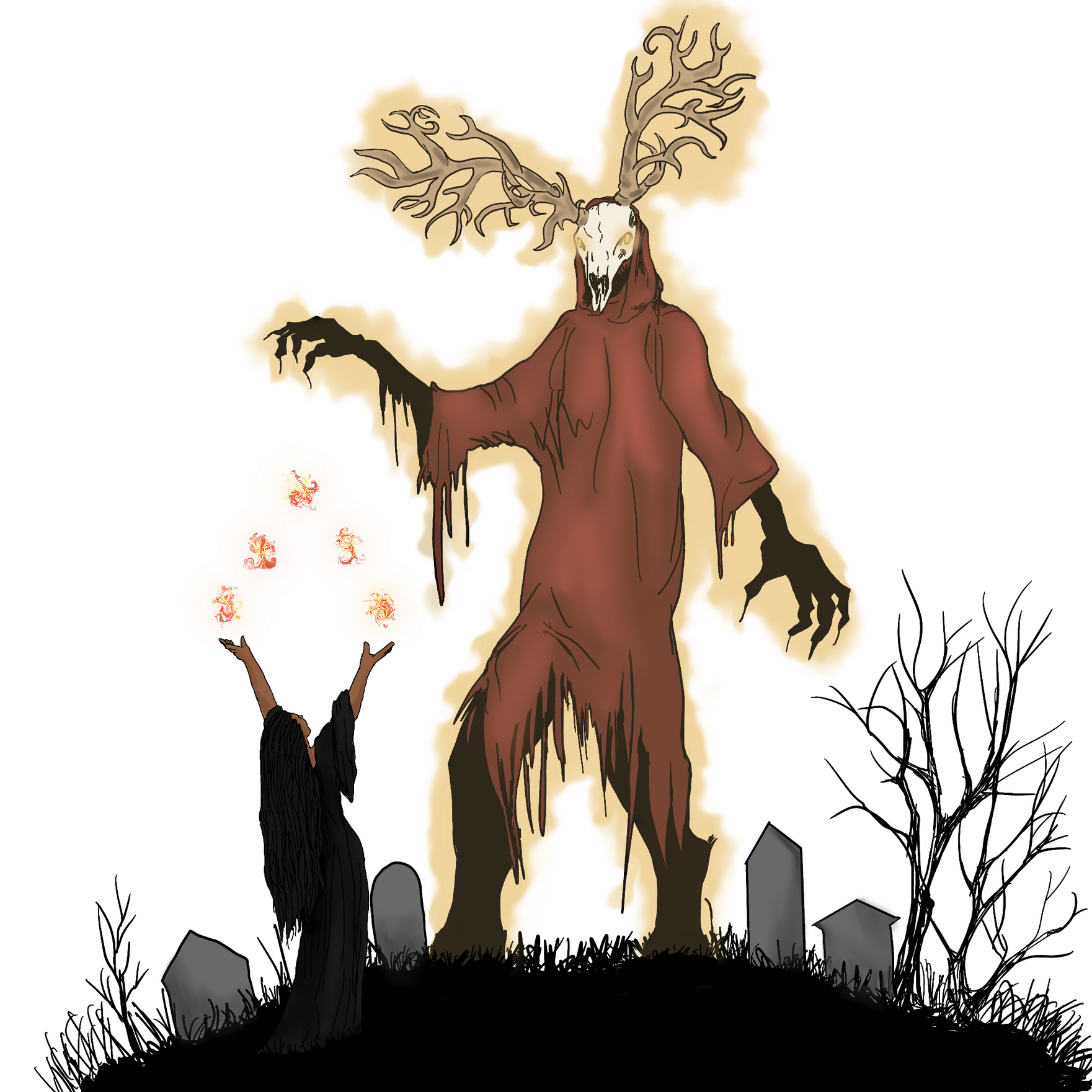
On the Vampire’s Couch;
A Couch of Anguish and Blood
Co-Author: Chris Hamilton
Elias, a Guaycurú hunter born into the night to fight colonial invaders in his homeland, now lives in the city of Sepallia, Illinois. He’s trying to settle into a quiet life, but his existence as a vampire won’t afford him any peace.His friends, a vampire named Ambrose, and an elder vampire “night-mother” named Renee, do their best to help him accept life. Unfortunately, things never stay peaceful for long, and Elias often has to replace his beloved couches when the lust for blood takes over.More than a story of vampires and blood, ‘On the Vampire’s Couch’ is a tale of struggle, acceptance, and finding peace in life when things have not gone your way for a very long time.

ODEUM RETOLD

COMING SOON
Events

Gone to Touch Grass
E.A. is currently enjoying the holiday season whilst working on the fourth book of Odeum and In the Vampire's Castle. Stay tuned for updates in 2026!
Contact
Please always feel free to reach out to me with questions and feedback about the Odeum series, I'm always happy to engage with my fans through the various means listed below.
Thank you
Your feedback is important to me, thank you for taking the time to reach out and I'll get back to you as soon as I'm able.
ODEUM BREAKDOWN

So far in the story you've met the core protagonist group; Kaylie, Jas, Anna, Gerard, Agmes, John, Halifax, and Artemis, along with the antagonist Acillius. But what does a small town girl who goes to act at a theater in Indiana, an accountant turned vampire, and the characters they have encountered, have anything to do with anything? Well, this series' events are a long line of dominos that began falling before Kaylie ever existed. It is a Mobius loop of "chicken and egg", where the end result is the fallout of mistakes and the retribution of ancients that have yet to join our story. It touches on Armageddon and our protagonist's attempt to revert its course.
The first two books introduce the world and its own bubbles:-The normal mortal world; ignorant of the existence of vampires-The outcasts of vampire society and their nests-The reigning shadow government of The Council; most vampires outside of the organization do not know of its existence, and those that do loathe its people and their despotism.
Book three, Crossing of Eurydice, will explore the "bubble" of The Order of the Rising Sun and follow a new protagonist, Roslyn. Roslyn's story will follow the Hero's Journey arc and introduce readers to the much darker depths of the Odeum universe's lore. You will learn secrets that characters from Odeum and The Keeper have not yet had revealed to them and explore new adversities that will challenge our future heroine. Readers will also get to see Roslyn meet some members of the "protagonist gang" and watch them work together, building the beginnings for book four.
A reader once asked me, "E.A., this is kind of wild, do you know how you're going to tie it together and where this is going?" The answer is "yes." Books three and four are completely outlined. All that I need to do is finish writing the story in "book form" I have a clear ending to the book that will neatly wrap up arcs and bring closure to the chaos. I know the host of characters and backstory, along with lore can be suspicious but I have been writing out ends, cleaning up details and discussing future progression with a group to ensure that I didn't write myself into a corner.
About book four, the final book in the Odeum series. I will say this: it will be the longest book in the series. So look forward to some interesting turns and twists in book three because it will be building something fantastic for book four. I also have the title and book cover prepared. For now, stay tuned for updates on book three and have fun reading!
Overview of The Council's Government Structure


The Structure:
In Odeum, The Council functions as a kritarchy (government system of rule with a panel of judges) with a bicameral system (two courts); a high court of Inquisitors and a low court of Magistrates. Each "region" or location is assigned their own panel of Inquisitors and Magistrates. Each panel is made up of twenty members. Each Inquisitor and Magistrate has jurisdiction over certain Tenets and related laws in their respective geographic locations. Administrative staff are those who work for The Council to carry out administrative duties for various departments, such as Treasury, Blood Distribution, Internal Affairs, Office of the Registrar, The Academy, and IT/Networking, etc.
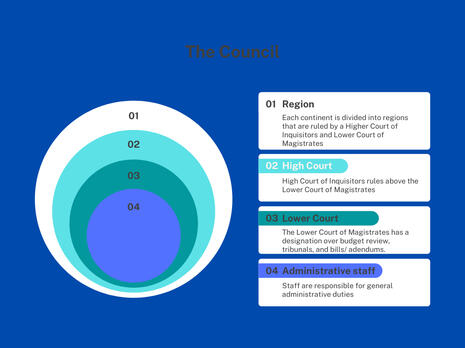

Lower Council of Magistrates:
The primary functions of the Lower Council of Magistrates include proposing bills and addendums to Tenets-supporting laws of their respective Tenets. Magistrates who write a proposal for a law will work alongside another Magistrate in a similar designation of the region. The written proposal for a law is then passed on to Magistrates in a different designation in the region to review the proposition from their perspective and give their insight. If the proposed bill is approved by the Magistrates assigned to review it, the proposed bill is then sent on for final revision and approval by The High Court of Inquisitors.
Another responsibility of Magistrates is to veto any bill or addendum that conflicts with the message of the respected Tenet. A bill or addendum may be vetoed at any point in the review process. At which point the addendum or bill will be sent back to the proposer for adequate revisions, or to be removed from the process entirely.
Case analysis and Tribunals (court preceding) are the judicial duties of the lower court of Magistrates. The twenty Magistrates of the lower court are assigned cases in their respective designations (Tenets they uphold). Magistrates all receive the same case load and those that do not fit their designation are then passed on to the Magistrates who would preside over them, respectively. Those set under the same or similar designation will study the same cases. The defendant's representative, additionally, will collect a statement from the defendant to send to the presiding Magistrates in their case. In some instances a statement is not given by the defendant, and the case must be reviewed with the information collected from any investigation the presiding Magistrates may have deemed necessary.
Investigation is an optional step in case analysis. Magistrates may review a case and deem a statement and a plea necessary to proceed with a hearing. If an investigation is launched, the presiding Magistrates must gather and present an address regarding the case and any evidence gathered. When the process of case analysis is complete, a court preceding will follow. If an investigation was opened, the preceding will follow after the investigation and address to the lower council by the presiding Magistrates.
Tribunals are an involved process wherein the presiding Magistrates will either receive the defendant's plea or will question them if they find that their statement conflicted with or did not explain parts of a case. After all of the evidence, statements, and pleas have been presented, if the Magistrates have no further questions for the defendant or representative, the case will be closed with a ruling.
Annual budget proposals are the last responsibility of the Lower Court of Magistrates in each region. Each year, from September 26th to October 1st, Magistrates will meet and discuss a yearly statement received from the Treasury departments of Accounts Payable and Accounts Receivable. At this time, all case revision, tribunals, and legislative duties are on a hiatus until the budget is passed. They will review and discuss, in full the previous budget and create and outline a projected budget for the following year. The proposed budget is then sent to the High Council of Inquisitors for approval.
The High Council will meet and discuss the yearly statement juxtaposed with the proposed budget. If there is a discrepancy found, the proposition is sent back along with a statement of error for correction. If a budget is not passed the week of the budget revision, the Lower Council of Magistrates will be permanently released from their positions and the budget will be reviewed and passed by the High Council of Inquisitors. A shutdown of the region's Council is not permissible for more than a day.
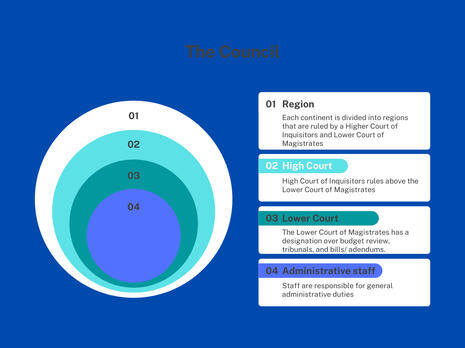

High Council of Inquisitors:
The High Council of Inquisitors rules above the Lower Court of Magistrates and acts as a final check or an escalation for certain processes. High Inquisitors are not divided by certain Tenets like the Court of Magistrates. Instead, they all observe the three Tenets and all of their related laws, upheld by the Articles of Jurisprudence, and make decisions as a whole body. The core functions of the Higher Court include:
➼ Reviewing, approving, or vetoing reviewed addendums and new bill propositions passed up from the lower court of Magistrates. Inquisitors have the authority to write an addendum or new bill. However, at the level of the Higher Court, the Lower Court would not need to be involved in the review process unless the Inquisitor who wrote the proposed bill or addendum deems the lower courts involvement to be necessary.
➼ Hold tribunals for Internal Affairs regarding misdemeanors committed by members of The Council, and any cases processed by the Lower Court where a ruling cannot be agreed on, or a ruling by a presiding Magistrates does not satisfy the opinions of "observing" Magistrates in a case.
➼ Approve or veto budget proposals from the Lower Court of Magistrates. This ensures that the budget has been reviewed by both courts, providing perspective from both.

Defendants and Representatives:
The Article's of Jurisprudence state that defendants have a right to a representative. A representative will either be provided for them by The Council or may be selected by the defendant. A defendant may also choose to represent themselves.
Representatives are to represent their client's (defendant's) best interests. They are to act as an informed and educated guide for a defendant that assists their client by explaining all processes and procedures of a proceeding Tribunal. They may also explain any and all charges their defendant may face. A representative's additional duty is to draft a written statement, taken from their client, to send to presiding Magistrates over their case. The representative may also make an executive decision to issue a plea instead of allowing their client to stand trial.
In the event that a defendant does not believe they are being appropriately represented, they can request a new representative at any time during their cases process. Defendants may also choose to represent themselves.
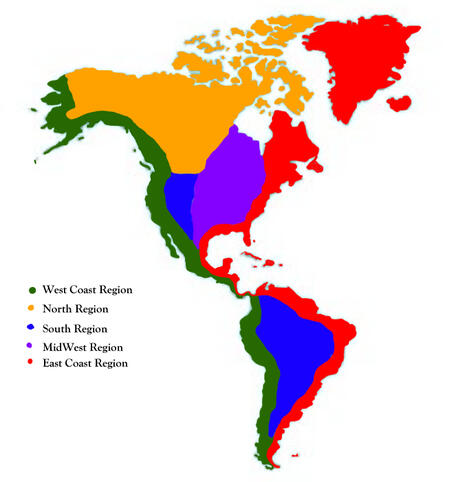

Regions:
While The Council recognizes that there are individual governments for each country, they do not recognize the boundaries of those countries and have drawn their own divisions for each continent. America is divided into several regions (shown below). Each region rules under the same three Tenets and their related laws. All rulings are uploaded to a database that is shared throughout the globe. This allows for Magistrates and Inquisitors to rule with as much consistency as possible. None of the regions have individualistic rights, as the various models for "regional rights", observed over time in different countries, proved to founding members of The Council as an unnecessary complication (for more information see brief history below).

The Tenets:
Beliefs of The Council and the foundation for their laws.
Separation:
➼ This Tenet defines the separation between mortals and vampires. As the law defines it, there is to be no association with mortals. The addendum to this law states that minor fraternization is acceptable. Establishing and maintaining relationships is not.Creation:
➼ This Tenet encompasses both the creation and the destruction of kin.Propriety:
➼ This Tenet is defined as conforming to conventionally accepted standards. This includes, but is not limited to, the dress, language, and cultural and social behaviors of peoples that kindred may inevitably environed by.
Articles of Jurisprudence:
These articles are a constitution detailing the structure, rights and duties of those governing and governed by The Council.
The peoples governed by The Council inherit the rights and privileges of the system's sovereignty. Individuals maybe separate from, but are not granted immunity from the Tenets, laws and articles set by The Council.
The peoples governed by The Council inherit the rights and privileges of the system's sovereignty. Individuals maybe separate from, but are not granted immunity from the Tenets, laws and articles set by The Council.
Article I: All powers of the legislature, judicial, and executive, are herein granted to the Magistrates and Inquisitors who represent the Tenets and laws for the Lower and Higher courts.
➼ Section I: There shall be two courts to define, amend, and eliminate any laws, bills, addendums, cases, and budgets of The Council; the high court of Inquisitors, and the lower court of Magistrates.
➼ Section II: Each court will consist of twenty members. Each member shall see to their duties until they have met an untimely death, dismissal from their position, or chose to step down from their position.
➼ Section III: Each member of The Council shall be compensated with the common currency of the region they govern, under the Tenet of Propriety, to be paid out of the region's Treasury.
➼ Section IV: Each region is subject to the rule of its governing body of a Lower and Higher Court. Regions shall act in accordance with the same structure, laws, and Tenets set forth by The Council.
➼ Section V: Each Magistrate is chosen from a selection process after they have completed fifty years of study at The Council's Academy for law, business, and communications, including an apprenticeship under an active ruling Magistrate or Inquisitor. The selection process is performed by senior leaders on the high court who will review resumes of qualified applicants. After candidates resumes have been reviewed, an interview process will then be held. The panel of Inquisitors will then vote to select the next Magistrate. A majority of seventy-five percent is needed in order for a candidate to be selected. Inquisitors shall be selected in a similar fashion. However, only presiding Magistrates can be considered.
Article II: The Higher Court of Inquisitors shall function above the lower court and provide balance to the system by process of certiorari (an order by which a higher court reviews a decision of a lower court).
➼ Section I: The Higher Court shall have final veto and approval powers for all executive and legislative decisions passed up from the Lower Court of Magistrates.
➼ Section II: They shall rule as the highest judiciary court, overseeing all cases regarding internal affairs, specifically those regarding Inquisitors. In the case that an Inquisitor must be tried in a case, an overseeing panel from a different region is to be selected and approved before a tribunal can take place.
Article III: Common duties of the government shall be upheld by administrative staff. Administrative duties for various departments, including but are not limited to Treasury, Blood Distribution, Internal Affairs, Office of the Registrar, The Academy, IT/Networking, and the assistants of the Lower and Higher Court members of The Council.
➼ Section I: Administrators shall hold no judicial or legislative powers but are responsible for minor duties upholding the structure and processes of The Council.
➼ Section II: Administration staff are permitted to access all of the educational resources of The Academy and are exempt from remuneration.
➼ Section III: Staff responsible for administration duties are not subject to a voting process in order to obtain their position. Applicants will be selected through an interview process by the leading board of the respective section in administration that they are applying to.
Article IV: The citizens under the governing body of The Council, including those who are members of its agencies, shall retain the right to a representative, a fair Tribunal as dictated by the applicable ruling court, and informed of his or her rights under The Tenets, the law, and The Articles of Jurisprudence should they be accused of a crime.
➼ Section I: These rights are not to be construed to deny or disparage those detained to be tried by a court of The Council.
➼ Section II: No governing member presiding over an active Tribunal or Interview shall receive gifts from other members or parties of The Council.
➼ Section III: No person shall be subject to slavery, involuntary, or indentured servitude.
➼ Section IV: Under the Tenet of Creation, capital punishment shall not be invoked unless a Tribunal rules that it is the equivalent exchange for a defendant's transgressions.
Article V: Governing members of both The Lower Court of Magistrates and Higher Court of Inquisitors must pass an annual budget. The revision and writing of each annual budget must take place between September 26th and October 1st.
➼ Section I: The Lower Court Magistrates will acquire statements from the Treasury (departments of Accounts Payable and Accounts Receivable). During the budget review, it is necessary that all case revision, tribunals, and legislative duties are put on hiatus until the budget is passed.
➼ Section II: The proposed budget must be assigned by the Lower Court of Magistrates to the High Court of Inquisitors, after revision, for approval. The yearly statement and proposed budget must be weighed, and considered carefully. Errors must be returned to the Lower Court of Magistrates before the budget is allowed to pass.
➼ Section III: In the event the budget does not receive the appropriate approval by the end of the week of revision (October 2nd), the Lower Council of Magistrates will be permanently released from their positions and the budget will be reviewed and passed by the High Council of Inquisitors. If a shutdown of the region's Council is required, one is not permissible for more than a day, defined as twenty-four business hours.
➼ Section IV: In the event a Mass Tribunal is held and conflicts with the dates of the annual budget revision, a break in the Tribunal will be allotted for the appropriate amount of time to review and pass the budget.
Article VI: No person(s) shall challenge the authority of The Council with any accusations of injustice, unless in possession of unadulterated, factual proof of conspiracy, treachery, despotism, or any other form of mistreatment of its peoples.
➼ Section I: Under the definition of Article IV of the Articles of Jurisprudence, in the event that proof of unjustness is found and a supporting case is built, a Mass Tribunal of Inquisitors shall be held to hear out the accusing parties claims.
➼ Section II: A fair Tribunal must be allotted to appropriately review the evidence brought forth. The process of investigation must be undergone by each member to ensure the findings are accurate and the evidence is credible.
➼ Section III: No governing persons shall tamper with provided details, nor shall they have immunity to any consequences in the instance that their misdealings are discovered.
Article VII: Under the Tenet of Separation, no kin shall associate themselves with mortals and must maintain plausible anonymity.
Article VIII: Persons responsible for kin, under the Tenet of Creation, must tend and manage the well being of their progenys. Makers will be held accountable for any fallacies of their progeny(s) for the first fifty years of their being as a citizen under The Council.
Article IX: Dwellings and their population in specific geographic locations shall be considered under the Tenets of Creation and Separtation. It is imperative, for the safety of all kin, that these guides are followed.
➼ Section I: A village shall not have more than one dwelling within its limits of no more than two persons.
➼ Section II: A town shall not have more than one dwelling within its limits of no more than two persons.
➼ Section III: A city with a population between 3,000 and 100,000 shall have no more than one dwelling within its limits, and no more than four persons.
➼ Section IV: A city with a population of 100,000 to 1,500,000 shall have no more than two dwellings at opposite sides of the city. Each dwelling should have no more than three persons.
➼ Section V: A city with a population of 1,500,000 to 9,900,000 shall have no more than three dwellings, each dwelling on opposite sides of the city
➼ Section IV: If a city exceeds 10,000,000 and above, multiple dwellings may be established, but no more than one establishment every one-hundred square miles, holding no more than four persons.

Amendments:
Taxation Proposition of 1740: The Mass Tribunal of 1740 concluded that taxation of the populus ruled by The Council shall not be enacted. The numbered persons of kin are unknown and should be known in order to properly apply taxes. Until such numbers and persons and their whereabouts are known, taxation shall not be enforced.
Populus Records Amendment of 1740: The Mass Tribunal of 1740 concluded that submitting one's record of identity is the sine qua non of all known persons ruled by The Council, under the Tenet of Propriety and Creation. This court herein establishes the Office of the Registrar, and imbues it will the governing power of recording, reporting, and notarizing all known person identities subject to the rule of The Council.
Regional Rights Amendment of 1866: The Mass Tribunal Assembly of 1866 concluded that regions may not have individualistic rights to rule in accordance with their own findings and must conform to decisions finalized in past proceedings. A challenge to previous findings is allowed if a Court of Magistrates or Inquisitors deems it necessary to revise and revoke previous rulings. This decision must be unanimous in order to call upon a Mass Tribunal to overturn laws or amendments previously written.
Plausible Anonymity Amendment of 1952: The Mass Tribunal of 1952 concluded that persons governed by The Council set forth to further define Article VII and plausible anonymity. Kin may fraternize with mortals in order to maintain the image of propriety. Kindred are not permitted to establish relationships or interpersonal dealings with the mortal populus unless there is an intention to conscript the mortal(s) into the populus governed by The Council.


Foundings of The Council: A Brief History
When the Inner Circle formed in the 1500s, many of the vampires that came together found each other through their travels and agreed that working together would allow for them to have an easier life. Acillius worked alongside Halifax, Zanna, Cara, and several others to organize a group similar to the Roman Senate. As the existence of other vampires was discovered, it was agreed upon to forge a bigger system to govern them. In 1579 The Tenets were written, and the first supporting laws were drafted to support this new system of government.
Taking his knowledge of hierarchy and governmental structure, Acillius helped devise a system with "more efficient checks and balances than the Roman government". He, Zanna, Halifax, Cara, and others from the Inner Circle decided that two courts would reign, one higher court of Inquisitors and another Lower Court of Magistrates. Over time, as their numbers grew, they divided up countries into regions so that their populous could be efficiently governed. During the 1600's The Council's structure underwent a revision and was then simplified to resemble the current system. The Inner Circle, as a function of the government's structure, was dissolved in order to avoid having too much power centralized in a small group. In 1689, the Articles of Jurisprudencce were created as a structure for the new framework of The Council.
Prior to this new structure, during the transitional period of The Council, Acillius and others in the Inner Circle realized that they would need funding for their government and for their well-being. In the 1400s the Inner Circle had already laid the ground work for this and had started to infiltrate royal courts around the world and began to sow seeds of war and discovery. They devised a plan to capture as much funding as they could from each royal nation and capitalized greatly on the Hundred Years' War, along with Spain’s conquests and the riches brought back from the New World. However, most of The Council’s funding was amassed between the 1500's and the 1800’s. These strategies put a leading light on Acillius as many of the schemes put on the table were his ideas. He worked very closely with Halifax, more than any other member of the Inner Circle.
A proposition for taxation was brought forward in 1740, and a Mass Tribunal (all members of both the Lower and Higher courts of each region from around the world met to decide on an overarching law or new structure that would impact future processes of the Council) was held. The proposition did not pass due to insurmountable unknown persons of the vampire populus, creating an inability to appropriately collect taxes. While the tax proposal failed, it did bring about a new system that attempted to collect data on its citizens in order to better govern them. This allowed for the creation of the Office of the Registrar.
As the Council watched the American Civil War unfold between 1861 and 1865, to some members it was a mark against "regional rights" (a proposed addition to the laws at the time that would have given each region the right to govern its citizens without having to consider the rulings of other regions who had passed laws or addendums another region did not agree with). "Regional rights" would have allowed a region to interpret a case without considering the ruling of an identical case in the past that already had a ruling. Some believed that the rulings of courts in one region should not be considered in another because of a difference in interpretation in the governing laws.
Though "regional rights" were not the same as "state's rights" they were similar enough that in the spring of 1866 a Mass Tribunal was held in Ontario, Canada to debate whether "regional rights" could potentially cause civil unrest and if it should be instated. Over the course of two-weeks, members of The Council for each region presented their stance on the issue and discussed counter-points. Eventually, it was decided with a 78% majority that "regional rights" did not have the potential to cause civil unrest, but that it was "an unecessary complication" to their current structure.
In the 1950's, Gerard Silva, who was a new Magistrate in the MidWest American regional Lower Court proposed an Amendment further defining Plausible Anonymity. After a year of the proposal for the amendment undergoing revision, a Mass Tribunal was held. Halifax, a founding member of The Council, along with the majority voted in favor of the Amendment, which passed in 1952.

There is no one reason for why or how some vampires in the series have the name that they are introduced by. Some changed their names over time or adopted a nickname as their alias. Others have kept the same first and last name or only identified themselves by their first name.

In the case of Acillius, he kept his first name from his mortal life, and never referred to himself by a surname. His name did not evolve over time or change. Being the only person named Acillius who works for The Council, he did not need any other identifier.

Caroline's name changed throughout her life. She changed her name from Isabella to Carolus after she was turned. Later, her name evolved into Caroline.

Artemis adopted the name of the Greek Goddess after she was turned. The name was chosen because of its symbology. She, like Caroline, chose names of meaning to mark the departure from their mortality.

Halifax was first known as Waleran. After he was turned, he reestablished himself as Lord Halyfax and settled in the area that would also adopt his name.

Gerard Silva slightly modified his given name from Gerardo de Silva to align himself in modern times with the Tenet of Propriety.

The Lennox family and those in their nest did not change their names throughout time. However, Koen, more commonly known as Chase, adopted his nickname as his common name before he was brought across. Stephanie and John dropped their last names after coming across. Stephanie's last name is not known. John's last name was once Turner.
Many other characters in the series will be introduced with names that have changed over time. In the future, some characters may only refer to themselves by any name they choose when introduced in the story. Usually, the older the vampire, the more fluid their name is.
Meet the Characters
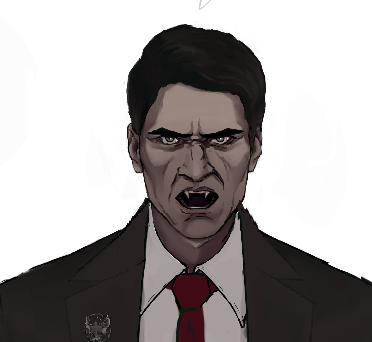
Meet: Acillius

Maker of Kaylab Lennox and a High Inquisitor of The Coucil's midwest region, Acillius served under both Gaius Marius and Sulla between 80 and 90 BCE(BC). He is driven by power and control and believes that "the ends justify the means". While he is notorious for throwing his weight around, he is still regarded as fair. Acillius recurs throughout the Odeum series and plays a major role in its events.

Meet: Agmes Lennox

The eldest son of Kaylab Lennox and older brother to Lance Lennox, Agmes Lennox comes from a small farm located outside Dumbarton in Scotland. He was turned around 1206, during the reign of William the Lion. Agmes is also the maker of Jas.
In Odeum and The Keeper, Agmes' struggles come to light as the reader discovers his reason for bringing Jas across. His character is scarred by the rocky past with his maker and father, Kaylab Lennox. These unhealed impressions became the motivation for his toxic behaviors. For example, throughout the story, Agmes shows subtle examples of controlling behavior.
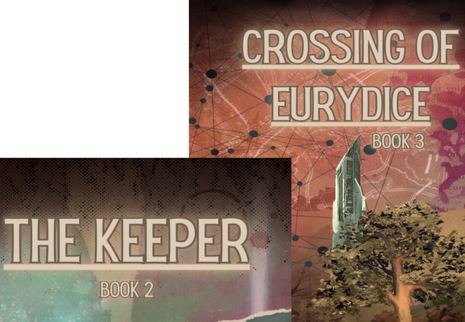
Meet: Alex

Alex is a long-time friend of Anna's. His maker is Aurther Bronson, who introduced Alex to the IT field and gave him an apprenticeship with The Council as a junior admin. He is a bit of a gossip and likes to formulate his own theories from rumors that he hears. Alex understands that The Council is secretive and that there is more than meets the eye with its system. He enjoys living as a vampire and believes that is better than living as a mortal.

Meet: Anna Lenore Ashbury

Anna is introduced in Odeum and plays a major role in the events of The Keeper. She was born in 1982 and raised in a city in Ohio. She was the only child of two loving parents in a large family, and the oldest of many cousins. While working for an accounting firm, Anna met Gerard Silva in 2007, who would end up becoming her maker.
Anna's hobbies include drawing and reading. She often spends a lot of her time locked in her own thoughts and struggles with general anxiety. Her favorite holiday is Christmas, which she enjoys decorating for.

Meet: Artemis

Artemis is a scientist for The Council in the field of physics. She comes from the Greek island of Crete. For ninety-two years she dedicated herself to the study of physics, sixty of which she committed to studying close particle interactions. Her no-nonsense attitude and low threshold for politics makes her seem prickly to many in The Council.
Artemis is one of the oldest members of The Council. She is introduced to us through Halifax, who calls her to assist Gerard with the investigation regarding Kaylie's mysterious disappearance.

Meet: Aurther Bronson

IT brain child for The Council and maker of Alex, Aurthur Bronson is easy going and also an optimistic character. He is first introduced in book two (The Keeper), and plays a recurring role behind the scenes of The Council's devious mechinations. His foundations in IT began at the dawn of the information age. He acts as a guide to the core members of The Council, advising them of the risks and rewards of technology. Additionally, he is the architect for The Council's network, server farms, and databases.

Meet: Cara

Cara is a High Inquisitor for the Far East region of The Council. She works closely with Acillius, Arthur, and Halifax. She is a minor character introduced in book two (The Keeper). Percetive, cunning and intelligent, Cara keeps others in the Inner Circle on their toes.

Meet: Caroline

Magistrate of The Council in the MidWest, who works closely with Gerard. Caroline has worked for The Council for almost four centuries. Her alignment with the status quo and the hive mind of The Council puts her at odds with Gerard but also allows her to be a voice of guidance for him. As a Magistrate, she is direct and no-nonsense about her work, but she also understands the value of politics and aligning herself with the majority. She also believes that the ends justify the means.

Meet: Charlotte

Charlotte was turned by Caroline in 1938. The two had become friends quickly and Charlotte took up work for The Council shortly after. She worked alongside Gerard as his assistant while she studied to become a Magistrate. She is very fond of Anna and Gerard and enjoys going to social events hosted by The Council.

Meet: Chase (Koen)

Born towards the end of the 17th century and turned in 1707 in Ireland, Chase is the son of a prostitute and the illegitimate son of a lord. His name is Koen, though he earned the name "Chase" in his younger days. He was Jas O'Shire's best friend in their youth, and traveled with him and the Lennox's for centuries.
Chase is always one for a good time. He is a jokester and not one for seriousness. His friendship with Jas began to wane from the 17th century to the 21st century due to the stress and drama of their various living situations. However, Jas and Chase both remained friends through their hardships.

Meet: Colleen O'Shire

Colleen, Jas' wife, appears for a few chapters in the first book Odeum. She is known for her brash attitude and fearlessness. Her character's past with Jas is brought up multiple times throughout the series.

Meet: Coulter

Known as "The Architecht" for Phoenix Underground, Coulter is a jack-of-all-trades. He is knowledgable in masonry, electronics, carpentry, ironwork, plumbing, framing, and roofing. Coulter assisted King Dan with finding the location for Phoenix Underground and developing plans to make the place livable and comfortable.

Meet: Egan

Egan appears in book two, The Keeper. He is the owner of a night-run auto shop owned by The Council. Though he is unable to speak, his kind demeanor shows through when he is introduced by Gerard. Egan shows up later in the story where he meets Kaylie.

Meet: Gerard Silva

Hailing from Lisbon, Portugal, Gerard Silva is a Magistrate in the lower court of The Council. He was born in the late 18th century and turned in 1820. His jurisdiction is over the laws of creation and destruction of their kind in the MidWestern region of "The States" in America.
He has a strong moral character, which is the thing that keeps getting him in trouble with his older and more powerful colleagues within The Council. Gerard constantly finds himself caught between the way things are and the way they should be. When he isn't trying to change the toxic system of The Council, he loses himself in his work. Often, he ends up going many nights and days without sustenance or sleep when he is engaged in his work. In The Keeper, Gerard's workaholic tendencies and good intentions stack up like dominos to be knocked down when he takes on more than he realizes he can handle.

Meet: Halifax

Halifax, his real name unknown, is a Magistrate in Great Britain and a friend of Gerards. He speaks with a geordie accent which can betray his stately appearance. In Odeum and The Keeper, Halifax works alongside Gerard and a scientist named Artemis to unravel the mysteries of Kaylie's bizarre disappearance and the link to Skellig Michael. Halifax is patient and a tactician. He appears multiple times throughout the Odeum series, in different settings.
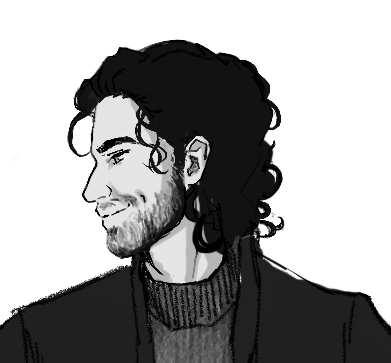
Meet: Jas O'Shire

During the opening of Odeum we meet Jas, Kaylie Lynn's love interest. He is introduced as affectionate and loving, but we learn that he has a jealous streak and a tendency to be vindictive. Jas was born in Ireland in the late 17th century and turned in the winter of 1707 by Agmes Lennox. His best friend is Koen (Chase); they grew up together and had lived through two centuries together in the Lennox nest.
As Odeum progresses we see Jas' character change; this growth is heavily influenced by Kaylie's development. The two are intertwined in more ways than one in the series and often have their backs to each other as they face challenges in their story. Jas' arc about redemption, but about personal growth from the reckless and envious person he was.

Meet: Jauq Maures Wellington

The owner of the Indiana theater in Odeum, Jauq Maures' true love lies with the performing arts. His passion for the arts was his motivation for building and running the theater. It provided a place for him to live vicariously through the success of his performers and staff.
At the beginning of Odeum, construction of the theater was delayed multiple times due to vandalism of equipment at the site. When security is hired to prevent the destruction of equipment and materials, members of the night-shift security team go missing, only to be found the next morning away from their posts, disoriented and with no memory of what happened to them on duty. Jauq decides to investigate on his own. He discovers that Kaylab and his nest of vampires have been the ones responsible for the vandalism. Jauq struck a deal with Kaylab Lennox to allow for the completion of the theater. This agreement holds for years until both sides grow tired of the stipulations of the arrangement.

Meet: John

John was born in London, in the late 18th century, to a well-off family of lower stature. In his youth he was drawn to science and engineering. His family was able to afford a good education for him, and for a time he studied at Oxford. Eventually, he focused his attention on tinkering with mechanics and developing his own prototype for the combustion engine, which he would hold live demonstrations of on the busy streets of London. When he was thirty-two, he met Jas, who stopped to observe one of his demonstrations.
John is very reserved. He has a very low threshold for drama and usually prefers the company of one or two people instead of a large group. In Odeum, John is not much of a fan of Kaylie and actively avoids being around Jas because of her.

Meet: Kaylab Lennox

Born and raised in Medeival Scotland, Kaylab Lennox owned a small farm outside Dumbarton during the reign of William the Lion. His maker was Acillius. Shortly after becoming a vampire, he returned home against his maker's wishes and brought his two sons, Agmes and Lance, across.
Centuries later, when he and those who were traveling with him settled in America, Kaylab strikes a deal with Jauq Maures to allow for a theater to be built on the land that their underground tomb resides in. Kaylab works as the head of makeup and costume in the theater and is the patriarch for the nest. His motives in Odeum are driven by his controlling nature. He does not usually take advice from the residence of his nest, and allows his strategies to be molded by the fear of his kin being found out.

Meet: Kaylie Lynn

At the beginning of Odeum, we meet Kaylie, an aspiring actress working at a local theater in a town in Indiana. At the time she is introduced in the story, she has been working at the theater for a couple of years and has a well-established relationship with those around her. She is preparing for the part of Christine in the Phantom of the Opera and is less than excited about going to the dress rehearsals.
At the start of the book, Kaylie is 20 years old and from a small town in Michigan. She spent her childhood and teen years in structured classes for music, acting, dance, and voice, essentially alienating her from her parents and family. While her parents had financially provided for her as she was growing up, they ultimately gave little emotional support, leaving Kaylie to thrive off of the response from audiences that she would receive from recitals, plays, and other shows. Kaylie shows a lack of introspection and a great deal of simplicity in her character early on, but as Kaylie experiences conflict within Odeum and The Keeper, a great deal of growth can be seen. Read the first two books of the Odeum series to know more about Kaylie.

Meet: King Dan

A megalomaniac with a cult of personality and a southern drawl. King Dan is the leader of Phoenix Underground. His vision for his commune, is one where all his kin are well fed and protected without the tiresome bureaucracy of The Council. Daniel was turned shortly after returning from WWII, and not long after that his maker was killed.
King Dan harbored a seething hatred for The Council and its members after he went to them for help and received none. He and Agmes do not see eye to eye, which causes issues for his group and Agmes later in book one.

Meet: Lace Pertrude

Lace is a minor character in Odeum, but one of the pivotal reasons for the upheaval in theater. Lace was a runaway who struggled with body dysmorphia, depression, and low self-esteem. When she was turned, she was taken in by the owner of the theater, Jauq Maures, and lived with him for three years. As Lace comes into her own, she grows from shy and docile to willful.

Meet: Lance Lennox

Lance is the youngest son of Kaylab Lennox and younger brother to Agmes Lennox. He was born in Medeival Scottland and turned by his father. In the theater he works as head of the tech crew. He's very approachable and friendly, and does his best to avoid confrontation.
In Odeum, Lance's actions are a catalyst for the chaos that carries on from book one to book two. He is the reason many things go wrong for those who work at the theater.

Meet: Mike

Mike is Kaylie's boyfriend from high school. He met her during a camping trip where they realized they went to the same school. In high school he was on the wrestling team. Mike likes to imbibe and play video games in his spare time. His looks are deceiving and he has an addictive personality.

Meet: Mitchell Davenport

Born to two loving parents, Mitchell Davenport went on to get a degree and work in business. He is a loving and caring husband to Roslyn, his best friend since childhood. He enjoys video games, strategy games, and spending time with his wife and parents.
He is polite, sometimes to a fault and is generally easy-going. Mitchell is not a fan of violence or fighting and prefers to stay in on his days of instead of going out. At times, Mitchell can also be a little frugal.

Meet: Morgan Carter

Age. 38
An officer of The Order, Carter is known for her strict training and harsh demeanor towards recruits. She is guarded and keeps to herself. Carter is a survivor, and though she might have moments of doubt in herself, ultimately she believes her only option in times of strife is to persevere.
Like many members of The Order, she is strong-willed and has a tendency to be temperamental, but through experience, she has learned patience. She takes her position in The Order seriously, but despite her sober personality, she has a tendency to be sarcastic.

Meet: Mr. Ibsen

He isn't mean, he's just strict. Mr. Ibsen is the theater director in the first book (Odeum), who is notoriously grumpy, but does an excellent job casting, and directing shows. His work with Jauq Maures at the theater began upon the completion of the building.
It is rumored in the story that Mr. Ibsen's attitude is due to how little Jauq pays him. Aside from his prickly behavior, he is also known for being impatient but direct with his cast. He takes his position seriously at the theater and underneath his rough exterior is a man who is passionate about his work.
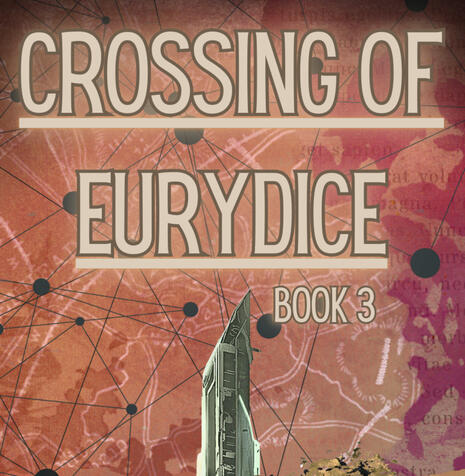
Meet: Myron McCullough

Age: 58
Myron has been a hunter with The Order of the Rising Sun for over fourty years. Myron was brought up in The Order from a young age where he learned to keep his faith close to him. He is typically reserved, refuses to get rid of his truck, and only hunts with a crossbow. His obtuse position on The Order's way of doing things makes him stick like a sore thumb to some, but members of the faction cannot deny his skills or capability.
While Myron is not typically a mentor, he was once tasked with leading a group of recruits to hunt a nest of vampires living under a theater.
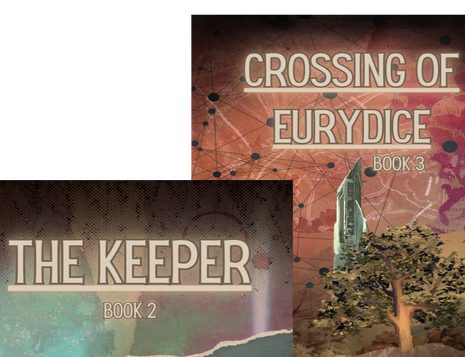
Meet: Roslyn Davenport

Age: 28
Roslyn Davenport is a business analyst working from home for a software development company in the MidWest. Her father was never in her life, and her mother died when she was 12. She enjoys dressing for comfort, cold-brew coffee, playing video games, and spending time with her best friend and husband, Mitchell.
She is headstrong and tenacious; sometimes her strong will gets in the way of her logic. Though she can be brash at times, she is able to reevaluate things and come to terms when she is in the wrong. Those who know Rolsyn would describe her as hardworking and empathetic. Roslyn is also very intuitive.

Meet: Sancha Silva

Gerard Silva's wife, whom he married in 1815. They were married for five years before Gerard was brought across by Zanna, when Sancha was six-months pregnant with their first child. Sancha is remembered as a strong-willed and stubborn person. Her refusal to marry and bold self-confidence was what drew Gerard, who also held the same views on marraige, to her.

Meet: Lucía Scully-Schlatts (Scully)

Before joining The Order, Scully had been in the military and given an honorable discharge for "failing to obey a military order". Scully speaks with a brassy, boisterous voice and is deeply empathetic and caring towards others. She becomes a good friend of Roslyn Davenport's and eventually fights by her side.
Like Roslyn, Scully can also be brash and have a "no nonsense" attitude. She enjoys socializing but doesn't like gossip or smack talk. Her morals are the pillars of her character, which she sticks to whether or not it could lead her to break rules.
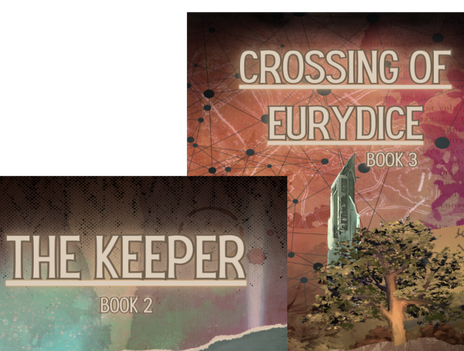
Meet: Sophia Petrov

Professor of Vampire Physiology at The Council's Academy. She is first introduced in book two (The Keeper) where Anna learns her first real lesson about their kind. Sophia is strict and takes her work for The Council seriously.

Meet: Stephanie

Stephanie is one of the younger kin who lived at the theater and worked with the tech crew. She is one of the first people that Kaylie meets when she arrives, and also the person who, coincidentally, is the reason Kaylie discovers their secret. Stephanie is a gossip with a bubbly laugh. Her opinion and attitude are always given, whether they are asked for or not.
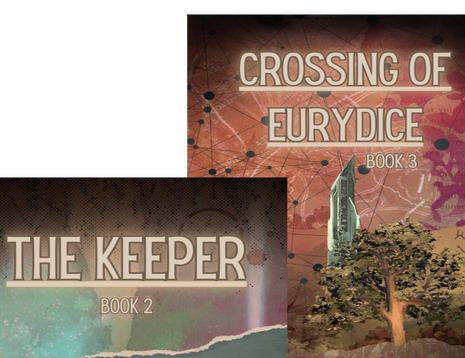
Meet: Tyler

Cupid-faced narcissist and a Magistrate for the West Coast region of the Americas. His sarcasm is often misplaced and rubs his colleagues the wrong way. Tyler makes an appearance in book two (The Keeper) but becomes more prevalent in books three and four.

Meet: Violet

Violet is referred to by Kind Dan as his "MacArthur." She works closely with King Dan at Pheonix Underground and has helped him organize his people and strategize his plans over the decades. She is also credited for helping plan an escape from a previous despot who ruled a different nest in the sewers of LA. When Violet is first introduced in book one, Odeum, she appears as seductive and mischievous.

Meet: Wendell

Wendell appears briefly in the first book, but is brought up multiple times during the series. He was brought over in 1969 and taken in by Acillius to work in his personal guard. Wendell is a chainsmoker with and addictive personality. He speaks with a light southern drawl and doesn't take anything too seriously. He is also a difficult person to predict and control.

Meet: Zanna

Maker of Gerard Silva, Zanna is only mentioned in the series. However, her past actions play a critical role in the steps that others related to her will take throughout the story.
Locations

Setting: Kaylie's Apartment in Indiana
The depiction below is the closest that I could come to the book's description, with the room builder that I used. The floor plan below should give readers an idea of what the layout of Kaylie's apartment in Indiana looked like. Per the book, the apartment is described as:
"...Her cramped living room was packed with worn hand-me-down furniture: a small box TV, a plywood coffee table, a red and green tartan couch, a tan folding chair, and a stained green lazy boy. The kitchen was joined with the living room and only had a gray mini fridge, a small gray stove, and a white microwave, which were given to her by her cousin a couple years prior, when she moved in. Kaylie was not one for interior decoration, especially not in her bedroom. It hosted a small bathroom with a bile-pink sink. A baby blue bathtub that matched her comforter and bed sheets, and a neon green toilet with pink flowers on the seat. She painted the toilet herself..."
 Kaylie's Apartment
Kaylie's Apartment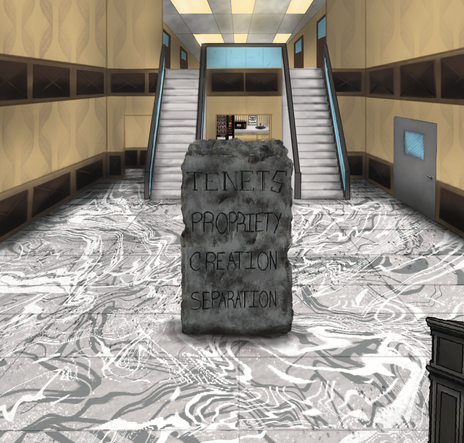
Setting: The Council's Midwest HQ
The Council's Midwest HQ shows up quite a bit in the Odeum Series. It's one of the most revisited locations in the entire story. This blog will be more of a picture book. Items that I drafted for imagery for the location, as well as imagery that I found that helped me describe the setting in detail.
Exterior and Parking Garage
This photo is similar to what the exterior of The Council's HQ might look like in real life. On the lower right you can see an entrance to a parking garage. That entrance would be there, but instead of the left side office spaces, the garage would continue up and the offices would continue behind the front of the building. The glass would also be heavily tinted to prevent sunlight from getting into the building.
 HQ Exterior
HQ ExteriorThe Entry
This entry was created completely from my imagination. Depicted below is a rough outline of what the entryway to the Midwest HQ would look like, including:
➼ The stone tablet displaying The Tenets in the center.➼ The double doors to the court room on the left.
➼ The second level that leads to Gerard's office and to the third level where the server/ SIM room is located.
➼ The security door to the right of the room that leads to the stairwell connecting the prison and the parking garage.
➼ The breakroom entrance nestled between the stairs.
➼ The hallway in the back left that leads to the blood bank.
 Entryway in HQ
Entryway in HQThe Tribunal Room
This room is the court room seen in book one where Kaylie makes her stand. This photo is as close as I could get to the book's description.
 Tribunal Room
Tribunal RoomGerard's Office
The photo below is a photobash of Gerard's office.
 Gerard's Office
Gerard's OfficeHQ Server/SIM Room (third floor)

HQ Server/SIM Room (third floor)
Prison Beneath HQ

HQ Prison
HQ Break Room

HQ Breakroom
HQ Blood Bank
 HQ Bloodbank
HQ Bloodbank
Setting: Skellig Michael
The Island of Skellig Michael plays a significant role in the Odeum series. Readers are given hints, in The Keeper (book 2), about the link between the rocky island and the mysterious events that are tied to it. What ties does it have to Kaylie? Uncover more by reading the Odeum series.
 Skellig Michael
Skellig Michael